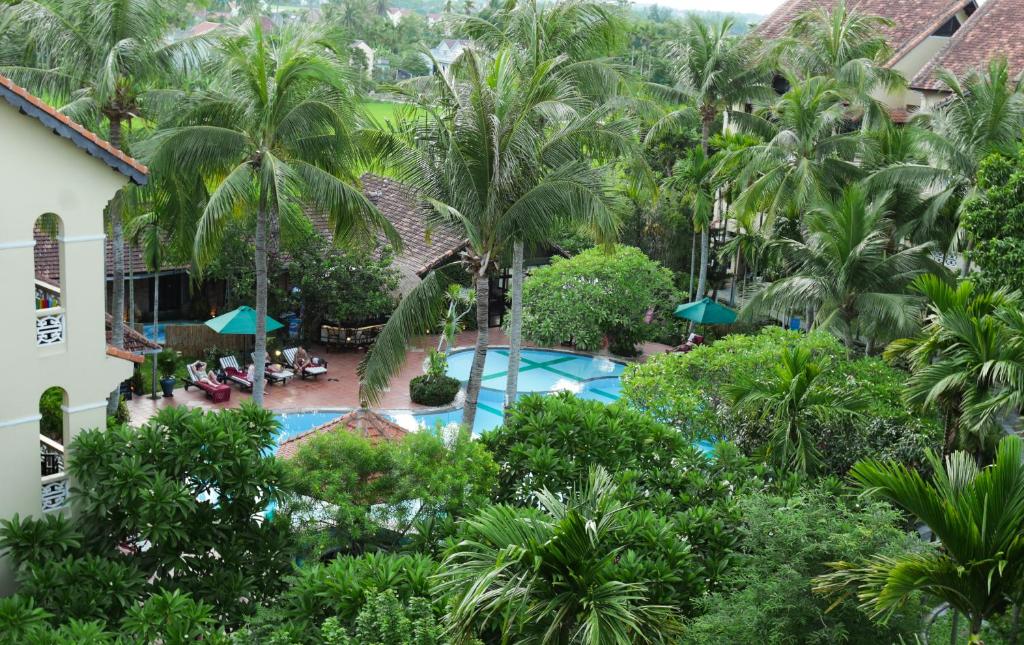
Introduction:
チャム島(キュラオチャム), Nestled within the azure waters of the Pacific Ocean lies a hidden gem, often overshadowed by its more popular counterparts. Chum Island, known as Kura O Chum in the local Chamorro language, is a pristine haven waiting to be discovered. With its rich biodiversity, fascinating history, and breathtaking landscapes, Chum Island offers an unforgettable experience for adventurers seeking solace and serenity amidst nature’s embrace.

Geographical Overview:
Chum Island is located in the western Pacific Ocean, part of the archipelago of the Northern Mariana Islands. It is situated approximately 9.6 kilometers (6 miles) southwest of the main island of Saipan, the largest island in the Commonwealth of the Northern Mariana Islands. Covering an area of approximately 3.6 square kilometers (1.4 square miles), Chum Island boasts a diverse topography, ranging from lush tropical forests to rocky cliffs and pristine beaches.
Must Read=speciale leopard safari tour in yala national park door malith & het team
Biodiversity:
One of the most captivating aspects of Chum Island is its rich biodiversity. The island is home to a plethora of flora and fauna, many of which are endemic to the region. Dense mangrove forests fringe the coastline, providing vital habitats for numerous species of marine life, including fish, crustaceans, and mollusks. The surrounding coral reefs teem with vibrant marine ecosystems, offering exceptional opportunities for snorkeling and scuba diving enthusiasts to explore the underwater world.
Above the waterline, Chum Island is a sanctuary for various bird species, including terns, frigatebirds, and brown boobies. The island’s dense vegetation provides nesting sites and shelter for these avian inhabitants, creating a cacophony of sounds as they go about their daily routines.
Historical Significance:
Beyond its natural beauty, Chum Island holds significant historical importance. During World War II, the island served as a strategic outpost for the Japanese Imperial Army, who occupied the Northern Mariana Islands. The remnants of their presence, including bunkers, artillery emplacements, and abandoned structures, still dot the landscape, serving as poignant reminders of the island’s wartime past.
In 1944, Chum Island became the site of fierce battles between Japanese and American forces during the Pacific Campaign. The scars of war are evident in the form of bullet-riddled ruins and overgrown trenches, bearing witness to the sacrifices made by soldiers on both sides. Today, these historical relics attract history enthusiasts and war veterans alike, offering a glimpse into the island’s turbulent past.
Ecotourism and Conservation Efforts:
In recent years, Chum Island has emerged as a hub for ecotourism, drawing visitors from around the world eager to experience its natural wonders. However, the fragile ecosystems of the island face numerous threats, including habitat destruction, pollution, and overexploitation of natural resources. Recognizing the need for conservation, local authorities and environmental organizations have implemented measures to protect and preserve Chum Island’s unique biodiversity.

Community-based initiatives promote sustainable tourism practices and raise awareness about the importance of preserving the island’s delicate ecosystem. Visitor guidelines encourage responsible behavior, such as refraining from littering, respecting wildlife habitats, and practicing reef-safe snorkeling and diving techniques. By fostering a culture of environmental stewardship, stakeholders aim to ensure that future generations can continue to enjoy the beauty of Chum Island for years to come.
Exploring Chum Island:
For adventurous travelers seeking an off-the-beaten-path experience, Chum Island offers a wealth of opportunities for exploration and discovery. Guided hiking tours lead visitors through the island’s verdant interior, where dense forests give way to panoramic viewpoints overlooking the shimmering sea. Along the way, knowledgeable guides share insights into the island’s natural history, cultural heritage, and conservation efforts, enhancing the overall experience.
For water enthusiasts, Chum Island’s pristine beaches and crystal-clear waters beckon with a host of aquatic activities. Snorkeling and diving excursions provide unparalleled access to vibrant coral reefs, where colorful fish dart among intricate formations of coral. Kayaking and paddleboarding offer a more leisurely way to explore the island’s coastline, allowing visitors to soak in the serene beauty of their surroundings at their own pace.

FAQ
ChatGPT
ChatGPT
1. What is Chum Island (Kura O Chum)? Chum Island, known as Kura O Chum in the local Chamorro language, is a small island located in the Northern Mariana Islands archipelago in the western Pacific Ocean.
2. How big is Chum Island? Chum Island covers an area of approximately 3.6 square kilometers (1.4 square miles).
3. Where is Chum Island located? Chum Island is situated approximately 9.6 kilometers (6 miles) southwest of the main island of Saipan, which is the largest island in the Commonwealth of the Northern Mariana Islands.
4. What is the biodiversity like on Chum Island? Chum Island boasts rich biodiversity, with dense mangrove forests, vibrant coral reefs, and a variety of terrestrial and marine species, including fish, crustaceans, mollusks, and bird species.
5. What historical significance does Chum Island hold? During World War II, Chum Island served as a strategic outpost for the Japanese Imperial Army, and remnants of their occupation, such as bunkers and artillery emplacements, can still be found on the island.
6. What activities can visitors enjoy on Chum Island? Visitors to Chum Island can enjoy a range of activities, including snorkeling, scuba diving, hiking, birdwatching, kayaking, paddleboarding, and exploring historical sites.
7. Are there guided tours available on Chum Island? Yes, guided tours are available for hiking expeditions, snorkeling and diving excursions, and historical site visits, providing visitors with insights into the island’s natural and cultural heritage.
8. What conservation efforts are in place to protect Chum Island’s ecosystem? Local authorities and environmental organizations have implemented measures to protect and preserve Chum Island’s delicate ecosystem, including community-based initiatives, sustainable tourism practices, and reef conservation projects.
9. Are there accommodations available on Chum Island? Chum Island does not have any permanent accommodations for visitors, but there are nearby options on the main island of Saipan, including hotels, resorts, and vacation rentals.
10. How do visitors get to Chum Island? Visitors can reach Chum Island by boat or kayak from Saipan, with guided tours and transportation services available from local tour operators.
11. What safety precautions should visitors take when exploring Chum Island? Visitors should be aware of their surroundings, follow safety guidelines provided by tour operators, stay hydrated, wear appropriate footwear for hiking, and adhere to any instructions regarding wildlife encounters.
12. Is camping allowed on Chum Island? Camping is generally not permitted on Chum Island due to conservation concerns and the lack of facilities, but visitors can explore day-trip options for outdoor activities.
13. Can visitors bring food and drinks to Chum Island? Yes, visitors are encouraged to bring their own food and drinks, as there are limited amenities available on the island.
14. Are there restroom facilities on Chum Island? There are no restroom facilities on Chum Island, so visitors should plan accordingly before embarking on their journey.
15. What is the best time of year to visit Chum Island? The best time to visit Chum Island is during the dry season, which typically occurs from December to May, when the weather is sunny and the seas are calm for outdoor activities.
16. Are there any cultural experiences available on Chum Island? While Chum Island is primarily known for its natural attractions, visitors can learn about the indigenous Chamorro culture through guided tours and interactions with local residents on nearby islands.
17. Can visitors bring pets to Chum Island? Pets are generally not allowed on Chum Island due to conservation concerns and the potential disturbance to native wildlife.
18. Is fishing allowed around Chum Island? Fishing regulations may vary, so visitors should check local guidelines and obtain any necessary permits before fishing in the waters around Chum Island.
19. Are there souvenir shops or markets on Chum Island? Chum Island does not have any commercial establishments, but visitors can find souvenir shops and markets on the main island of Saipan offering local crafts and gifts.
20. How can visitors contribute to the conservation of Chum Island? Visitors can contribute to the conservation of Chum Island by practicing responsible tourism, supporting local conservation efforts, and raising awareness about the importance of preserving the island’s natural and cultural heritage.
Conclusion:
In a world where natural beauty is increasingly rare, Chum Island stands as a testament to the enduring power of untouched wilderness. From its lush forests and pristine beaches to its rich history and vibrant marine life, the island captivates the imagination and beckons to be explored. As travelers venture beyond the beaten path in search of authentic experiences, Chum Island remains an oasis of tranquility, where the wonders of nature await those willing to seek them out.



